
Have you been searching for information on Nattokinase dosage, Nattokinase is a well-tolerated fibrinolytic enzyme, it is produced by Bacillus natto when fermentation takes place during the boiling of soybeans into natto.
Other fibrinolytic enzymes are found during the fermentation process of traditional foods in places like China, Korea and Thailand.
Nattokinase is produced in pills, capsules, powders using this fermentation technology. If you are considering taking Nattokinase for heart disease, blood clots, high blood pressure, fibromyalgia, endeometrosis, or deep vein thrombosis then you need to know about Nattokinase Dosage.
Where does Natto come from?
Natto has been consumed in Japan as a popular dish for more than1,000 years, it would be served as a breakfast perhaps with rice, with toast or as natto sushi, believe it or not you can also get natto as an ice cream!
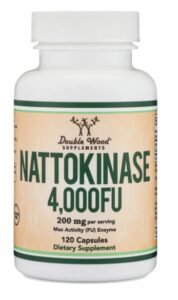
Natto has been used to treat heart disease which may explain why the rate of heart disease in Japan is so low compared to the Western world.
Japanese men have a third less occurrence of heart disease compared to men in the USA, the figures speak for themselves 45.8 (per 100,000) in Japan, less than one third of coronary heart disease in the USA where the USA the rate is 150.7 (per 100,000).
During the 1980’s and quite by accident a Japanese scientist discovered that when Nattokinase the enzyme was separated from natto it showed promise as a thrombolytic agent meaning that it could dissolve fibrin.
This amazing discovery meant that Nattokinase could be produced commercially to help people with heart disease, atherosclerosis and other conditions.
Is Nattokinase called other names?
Depending on where you live Nattokinase is called by other names such as:
- NK
- Soy natto
- Subtilisin Nat
- Haricots de Soja Fermentes
- Nattokinsa
- Fermented soybeans
- Extrait de natto
- BSP
- Natto extract
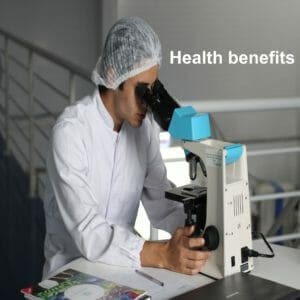
What is Nattokinase good for?
Nattokinase is a popular natural alternative for many conditions that include:
- Heart Disease
- High Blood pressure
- Chest pain (angina)
- Varicose veins
- Atherosclerosis (hardening of the arteries)
- Poor circulation
- PAD (peripheral artery disease)
- Inflammatory pain
- Fibromyalgia
- Endometriosis
- Muscle spasms
- Infertility
- Chronic fatigue
- Sjogren’s syndrome
Exactly how does Nattokinase work?
We have established that Nattokinase is a fibrinolytic agent meaning it can thin the blood by dissolving blood clots and reducing the build-up of plaque and cholesterol from the arteries.

This action may help to protect against deadly conditions like heart attack and stroke, according to Martin Milner ND Nattokinase is a safe and potent Thrombolytic, meaning that the enzyme may be useful for many disorders including heart disease, hypertension, fibromyalgia or chronic chest infections.
Is Nattokinase safe to take?
We know that natto has been eaten by the Japanese people for many years, it is part of their culture, Nattokinase is derived from Natto and is deemed to be safe to take orally in similar amounts to the food that is consumed daily by Japanese people.
Have studies on Nattokinase been done?
There are many studies on the effectiveness of Nattokinase, one such double blind cross over study by the Japan Science Laboratory NSK-SD consisted of 12 young healthy males were either given 2,000 FU (Fibrinolytic Units) of Nattokinase or a placebo.
Blood samples were taken every 2,4,6 and 8 hours after administration, the participants were not taking Natto up to two months before the trial began, blood was analysed for coagulation and fibrinolysis parameters.
Results showed that by taking one Nattokinase capsule/tablet of 2,000 FU enhanced the blood clotting and the dissolution of fibrin.
One study on rats exploring Nattokinase as a viable natural way to reduce atherosclerosis demonstrated that by supplementing a diet with Nattokinase from natto suppressed intimal thickening in comparison to the placebo group.
This meant that Nattokinase worked over a three-week period to repair injury to the endothelial cells in the blood vessels. It is thought that damage to the endothelial is a major cause of heart disease.

Another study conducted on 79 people to assess the effectiveness of Nattokinase on high blood pressure levels demonstrated that Nattokinase had a beneficial effect on the high blood levels of the participants.
To take a look at Nattokinase products go to Herbs direct.com
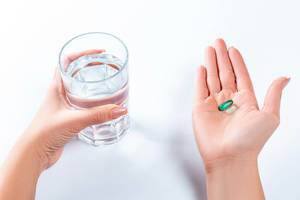
How much Nattokinase can you take?
Nattokinase is sold in capsule or pill form each one contain 2,000 FU or fibrinolytic units of activity.
In all of the clinical trials that I have found the maximum amount of Nattokinase dosage that was given to the participants was 2000 FU (or 100 mgs) twice per day.
I can’t find any studies that show any different dosage so I’m recommending that the maximum Nattokinase dosage per day is 2,000 FU two times a day on an empty stomach.
Nattokinase is produced mainly in the USA both capsule or tablet form, Nattokinase dosage is described in fibrinolytic units (FU) 2,000 FU would roughly equate to 100 milligrams or 3,000 FU would be around 150 milligrams.
I have tried to find a universal dosage for Nattokinase but nearly all the manufacturers recommend taking 2,000 FU two times per day, some of the trials used 3,000 FU safely for up to 26 weeks.
Nattokinase and DVT
Nattokinase breaks down fibrin, deep vein thrombosis or DVT is caused by blockages in the blood vessels going to the leg area, Nattokinase and Pycegenol has been used to prevent this condition during long haul airline flights.

Deep Vein Thrombosis is a medical term it describes a blood clot usually in a deep vein in the leg, DVT mainly effects older people with an obese condition or with underlying circulatory issues.
A 2015 study reported that participants were given 100 mg of Nattokinase orally results showed a break down in the protein fibrin known to cause blood clotting, Nattokinase was proven to act as a potent blood thinner (anti-coagulant)
This research showed that Nattokinase may be useful in reducing the symptoms associated with DVT or preventing deep vein thrombosis.
Nattokinase and Atherosclerosis
Atherosclerosis or hardening of the arteries is a major cause for concern because it could lead to a heart attack or a stroke, the cause of atherosclerosis is a slow build-up of fatty deposits on the walls of the arteries.
A Chinese study in 2018 of 76 patients suffering from the symptoms of atherosclerosis were each given 150 mg dosage of Nattokinase over a 6-month period, the results demonstrated a 36.6 % reduction in plaque build-up in the arteries and an increase in HDL or good” cholesterol” levels.
It must be pointed out that a cholesterol lowering drug Simvastatin was also administered to the group, it was found that plaque levels did also reduce in this group (11.6%) but not as much as the Nattokinase group, cholesterol levels did reduce more effectively in this group also.
To take a look at Nattokinase products go to Herbs direct.com
Can Nattokinase be taken with other medicines?
Nattokinase isn’t safe to be taken by people with ischemic stroke, coagulation disorders, peptic ulcers or those who are already taking prescription blood thinners.

People with low blood pressure are advised not to take Nattokinase, people with heart disease taking ACE inhibitors or calcium channel blockers should not take Nattokinase without talking to a doctor first. Women who are pregnant or breastfeeding should not take Nattokinase.
Nattokinase Interactions
Nattokinase influences pharmacology and may increase a risk of bleeding where antiplatelet and anti-coagulant agents are used, Nattokinase has high levels of Vitamin K2 which may affect the international normalized ratio of Warfarin a blood thinner
Nattokinase may affect pharmacology and could increase the risk of bleeding with anticoagulants and antiplatelet agents.
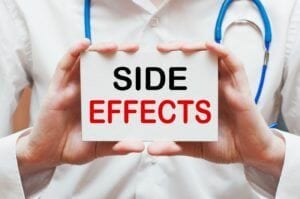
Nattokinase side effects
Most of the clinical trials on Nattokinase were short-term, no serious side effects or reactions were reported, in theory there is always a risk of bleeding in patients with acute cerebellar haemorrhage and a history of strokes.
There is also a risk of bleeding in those people on blood thinning medication such as warfarin and aspirin.
Nattokinase Toxicology
In the Ames test ( a widely used test where bacteria are used to test whether a chemical can affect mutations in the DNA of the test organism) Nattokinase was found to have no adverse side effects of 250 mg approximately on humans.
Nattokinase what to look for
In general supplements aren’t strictly regulated, so quality assurance can be an issue from country to country, for best quality and safety choose a brand that has (a) good customer reviews and (b) contains Bacillus subtilis or Bacillus subtilis natto on the label. I use Nattokinase from the people at Herbs direct.com because it is of good quality and a dependable service.
References:
http://cdn2.hubspot.net/hub/211377/file-519953293-pdf/Nattokinase_-_Optimum_Health_Vitamins.pdf
https://www.ncbi.nlm.nih.gov/pmc/articles/PMC4479826/
https://www.ncbi.nlm.nih.gov/pmc/articles/PMC5066864/
https://www.ncbi.nlm.nih.gov/pmc/articles/PMC6043915/
Related Articles
What is arteriosclerotic heart disease?
Does Nattokinase dissolve blood clots?
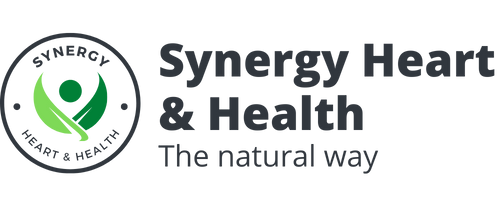

Pingback: Health Benefits of Serrapeptase Enzyme supplements
Pingback: What supplements lower cholesterol?
Hi Matiss,
Thank you for your comments, just to correct the rate of coronary heart disease among Japanese men is less than one third that of the U.S. at 45.8 (per 100,000/year), while American men have a rate of 150.7.
Fintan
Hi Rasa,
Thank you so much for your comment, Nattokinase really is a helpful enzyme especially for heart disease.
Fintan
Yeah, going with those 2,000 FU twice a day sounds pretty legit.
I have to be honest, I had no idea that the substance was so capable in terms of battling so many ill conditions. I had heard of it being great for heart disease, fatigue, and high blood pressure but that list just goes on and on and on.
A really great job compiling it all here. I also liked the brief look on studies and that how Nattokinase actually works. The short discourse on it being incredibly popular in Japan (and having been so for more than 1000 years) was also a fun and interesting bit.
Thank you, I learned a lot.
Have a Wonderful Day,
Rasa
This is some proper insight into Nattokinase, Fintan.
On that note, I just wanted to thank you for this article. Really, really awesome stuff. And you were so thorough and exhaustive with the information you provided. I sincerely appreciate it as it for sure helped me cut down on research time.
Other than that, I was surprised that in Japan they have been into Natto for more than 1000 years. Kind of makes you want to visit Japan and soak in all of its beauty (including the NK, of course). Whereas as for the figures I was just blown away. Did I get this right – in the USA 45% of people aka 45k per every 100k people ail with heart disease whereas in Japan it’s 150.7 per 100k aka 0.15% of the population?
If so, that’s just bonkers!
Either way, thank you for all the insights. 🙂
Cheers, and have a Great One!
Matiss
Thanks for your comment
Fintan
Hi Chuck,
That’s great to hear that Nattokinase helped you with the blood clots. Thanks for your comments.
Thank you for this great description of nattokinase. I had a blood clot I was given prescription blood thinners at first. But the prescription blood thinners give me side effects. I found the nattokinase about a year ago and decided to give it a try. I have not had any blood clots since I started taking it, and not really noticed any side effects either. What a great product!
I am currently on a health research on nattokinase. I have learnt quite a number of new things from what you have written here. I didn’t know that they were from Japan and also that they cure other issues apoart from that of the heart. You are really knowledgeable about this particular topic. You have helped me a great deal and I’ll check your references too. Thank you so much.